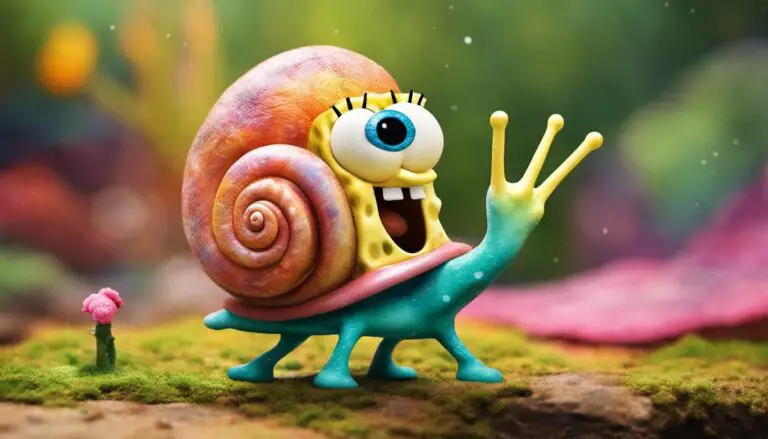Do Snails Have Hearts?
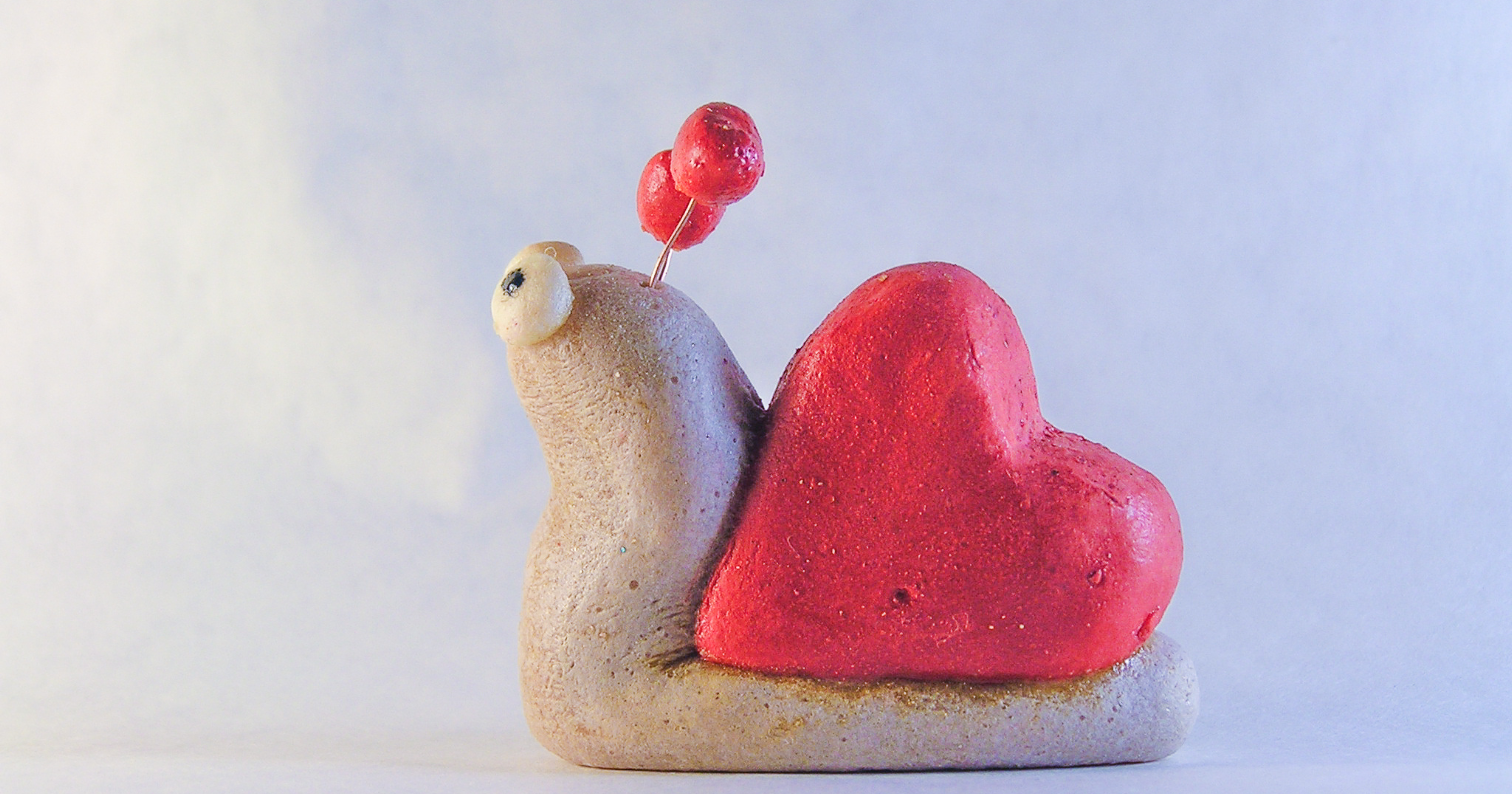
When exploring the fascinating world of snails, you might wonder, “Do Snails Have Hearts?” The answer to this question is yes – snails do have hearts. As members of the gastropod family, their circulatory systems play a vital role in their survival and overall well-being. This article will delve into snail anatomy and discuss their unique heart structure.
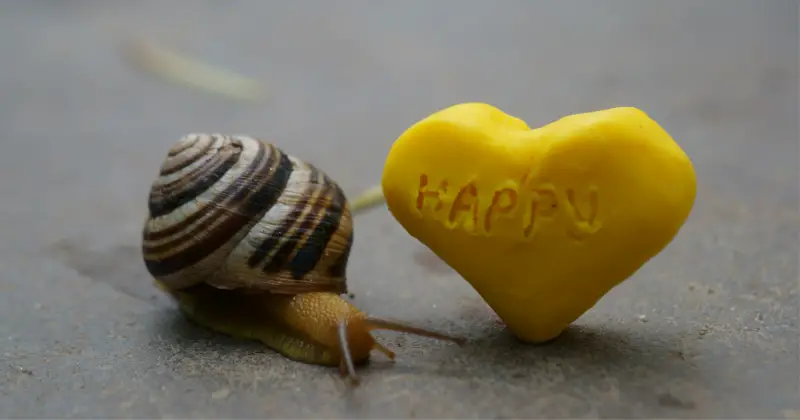
Snails possess a relatively simple heart consisting of two chambers: an auricle and a ventricle. The auricle receives hemolymph from the gill or lung while the ventricle pumps it throughout the body via the aorta. The heart is located within the heart bag, which also plays a role in the snail’s excretion process.
Understanding the basics of snail anatomy, particularly the presence and function of their hearts can give you a deeper appreciation for these intriguing invertebrates. As you continue to learn about snails, you’ll discover how their unique anatomical features enable them to survive in various environments.
Contents
Table of Contents
Anatomy of a Snail
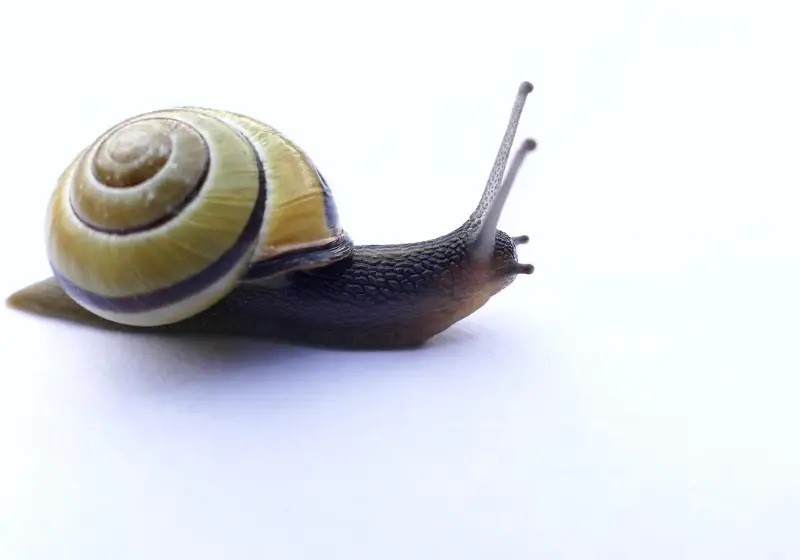
Physical Overview
Snails are gastropods, a kind of mollusk with a soft body enclosed in a calcium-based shell. Their bodies consist of a head, foot, and shell, which protect their internal organs. You will find one to two pairs of retractable tentacles on their head, each equipped with sensory receptors. The eyes can be found at the tips of these tentacles, while the lower pair functions as olfactory organs to help the snail smell its surroundings.
Internal Anatomy
Inside the snail’s body are various organs responsible for its bodily functions. The foot, located beneath the snail, is a muscular structure that allows it to move using a wave-like motion, while the head contains their mouth and anus. The internal organs are covered by an outer layer of skin called the mantle, which usually covers the shell and the mantle cavity.
Unique Organ Functions
Apart from common organs like the brain, heart, and reproductive organs, snails possess some unique features that set them apart:
- Tentacles: Snails have retractable tentacles that serve multiple purposes. The upper pair has eyes at the tips for sight, while the lower pair detects smells in the environment, assisting the snail’s navigation.
- Statocysts: These small, fluid-filled sacs located in the snail’s head function as balance organs, allowing the snail to maintain proper orientation while moving around,
By understanding the unique features of snails’ anatomy, you can appreciate how these gastropods have adapted to thrive in their respective habitats.
Circulatory System in Snails
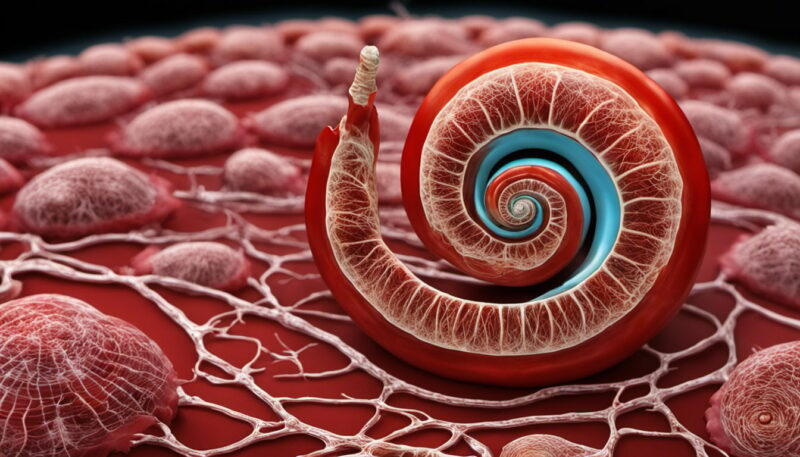
Heart and Blood Circulation
Snails possess an open circulatory system with a heart that pumps hemolymph, a fluid that functions similarly to human blood. Their heart comprises one atrium and one ventricle, which are found just above the digestive system.
In the circulatory system of snails, the atrium receives hemolymph from the gills or lungs while the ventricle pumps it into the aorta. Some primitive gastropod species have three heart chambers due to having two gills, each of which supplies its auricle.
Unlike human blood, snails’ hemolymph contains hemocyanin, a copper-based molecule that transports oxygen. The blue color of hemocyanin contrasts with the red iron-based hemoglobin in human blood.
Respiration Methods
Mollusks, like snails, have various methods of obtaining oxygen. For instance, aquatic snails possess gills that allow them to extract oxygen from the surrounding water, while terrestrial snails typically have lungs for absorbing oxygen.
Regardless of the respiratory organ, the essential function remains: providing oxygen to the hemolymph, which is transported throughout the snail’s body. In turn, the oxygen supports cellular respiration and other vital processes in the snail’s biological system.
Both gills and lungs work in conjunction with the snail’s heart and open circulatory system, ensuring that these invertebrates receive the oxygen they need to thrive.
Reproductive System in Snails

WIKIPEDIA
Hermaphroditic Nature
Snails are fascinating creatures when it comes to their reproductive system. They are hermaphrodites, meaning they possess both female and male reproductive organs simultaneously. This unique characteristic allows them to reproduce without needing a partner, making their survival and reproduction more efficient in various environmental conditions.
Mating and Fertilization Process

WIKIPEDIA
Despite being hermaphrodites, snails often still mate with other snails to exchange sperm, which can increase genetic diversity among their offspring. During mating, snails extend their bodies and exchange sperm cells through copulation. It’s important to note that this process can be time-consuming and may last several hours.
After mating, the fertilization of the eggs happens internally. The sperm from either snail combines with the egg cells, resulting in fertilized eggs, ready to develop into embryos.
Egg Laying and Offspring Birth
Once the eggs have been fertilized, the snails prepare to lay them in a safe and suitable environment. Snails typically search for locations with moist soil, leaf litter, or under logs and rocks to lay their eggs. They often dig small holes in the soil to deposit their eggs, providing some protection from predators and environmental hazards.
The number of eggs laid varies between species and can range from just a few to several hundred in some cases. After laying the eggs, snails usually cover them with a layer of mucus to help maintain moisture and provide additional protection. The incubation period can vary between species but generally takes a few weeks.
During this time, the embryos develop within their eggs, and eventually, the baby snails emerge, fully formed with a soft, transparent shell. As these young snails grow, their shells harden and become more opaque, and they start their journey through life, ready to carry on the cycle of reproduction in the future.
Eating Habits of Snails
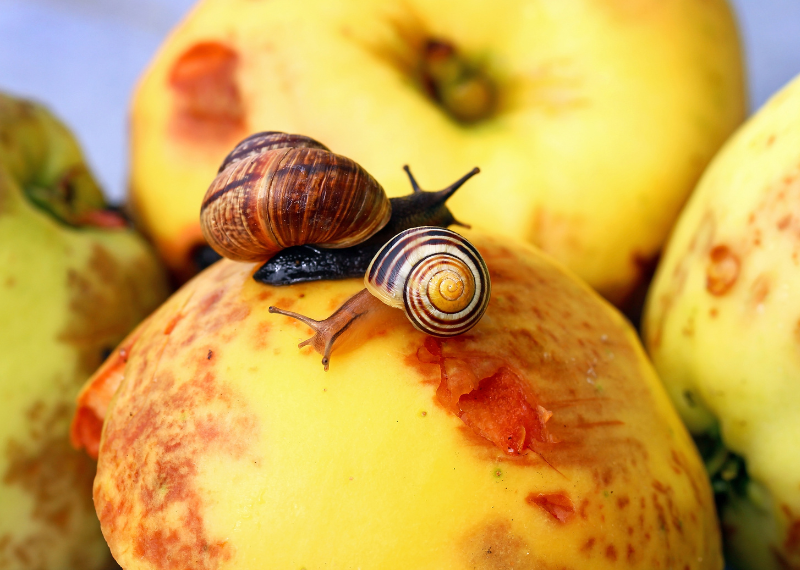
Common Foods
Snails exhibit a diverse range of eating habits, depending on the species. Most snails are herbivores, feasting on plant matter such as leaves, algae, or fruits. In their search for food, snails rely on their powerful smelling ability to detect the presence of potential meals. Some species of snails, however, are carnivorous and prey on fish, worms, and other small animals.
Unique Feeding Structures
A snail’s feeding structure is quite fascinating. They employ a specialized organ called the radula to consume their food4. The radula has thousands of minute teeth that work like a file, scraping and grinding the food before entering the snail’s digestive system. This efficient feeding mechanism allows snails to extract nutrients from various plant matter and effectively break down their meal.
In summary, snails have diverse eating habits depending on their species. They consume various types of plant matter, and some even eat other animals. Their unique feeding structures, including the radula and its thousands of teeth, enable them to break down food efficiently.
What Do Garden Snails Eat and Drink?
Habitats and Predators
Understanding Snail Habitats
Snails can be found in various habitats worldwide, depending on their species. Land snails like the garden snail thrive in damp environments like forests, gardens, and grasslands. Terrestrial snails are most commonly found on the soil or under leaf litter.
In contrast, freshwater snails reside in rivers, lakes, and ponds, while sea snails inhabit oceanic environments. It’s essential to note that some snails, like the desert snail, have adapted to the harsh conditions of deserts.
Common Predators
Snails face numerous predators in their natural habitats. Common predators include flies, mites, nematodes, millipedes, centipedes, some caterpillars, fireflies, leeches, beetles, and their larvae. Larger animals such as rats, mice, weasels, squirrels, toads, salamanders, turtles, blackbirds, and wild turkeys also prey on snails. Surprisingly, snails can occasionally become cannibalistic and eat each other in certain circumstances.
As a snail enthusiast or someone seeking to learn more about these fascinating creatures, understanding their habitats and predators can provide valuable insights into their behavior, survival mechanisms, and ecological importance. As you explore the diverse world of snails, you’ll uncover the unique characteristics and adaptations that have enabled these creatures to exist on land and in various aquatic environments.
Unique Snail Behaviours

Snail Movement
Snails are fascinating creatures with unique movement abilities. They use their muscular foot to glide along surfaces, secreting an adhesive mucus that helps them adhere to the surface while reducing friction.
This mucus also retains moisture, allowing them to stay hydrated and maintain the necessary moisture levels for survival. You might think snails are slow, but their speed is quite efficient, considering their size and biology.
Sleep and Hibernate Patterns
Unlike other animals you might know, these seemingly slow creatures have an interesting sleep pattern. Snails are primarily nocturnal and more active at night or on cloudy days when the air is cooler.
They seek shelter daily to reduce water loss and avoid the heat. Snails can also enter a hibernation-like state when environmental conditions are unfavorable, such as a lack of moisture or cold temperatures. During this time, they retract their bodies into their shells and secrete a thin layer of mucus, which hardens to form a protective barrier called an epiphragm.
Defensive Mechanisms
Aside from their shells, which provide physical protection against predators, snails also have unique defensive mechanisms. One such strategy is their ability to produce a slime-like substance when disturbed. This secretion can deter potential threats by making the snail harder to catch or less appealing to eat. Some species, known as “bubble-shell snails,” can even trap air within their shells to increase buoyancy and escape from predators in water.
In conclusion, snails exhibit various unique behaviors that make them intriguing creatures. Their distinctive movement, sleep patterns, and defensive mechanisms demonstrate their adaptability and resilience in an ever-changing environment.
Snails in Pop Culture and Cuisine
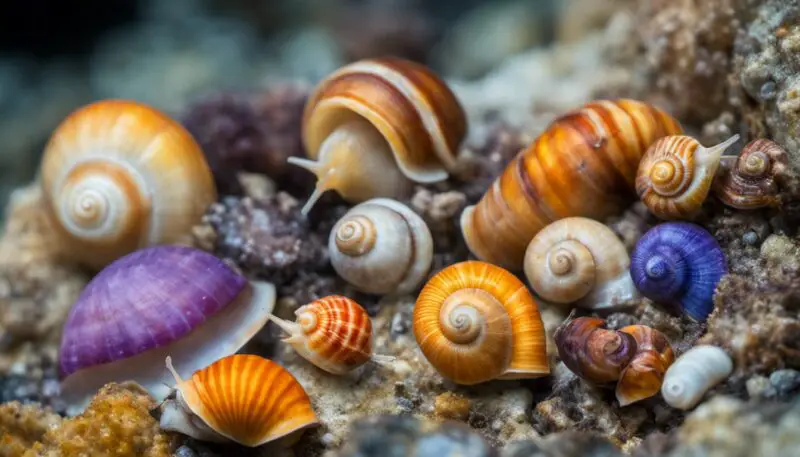
Snails as Pets
Snails, especially garden snails, make low-maintenance and unique pets that can be a fascinating addition to your home. They don’t require much space, and their enclosure can be easily maintained, making them an excellent choice for beginners. Garden snails are great conversation starters, and observing their slow and tranquil movement can provide relaxation and stress relief.
Snails in Culinary Delicacies
Regarding cuisine, snails, particularly escargot, are significant in many culinary traditions. The French escargots are popular, cooked in garlic and parsley butter. However, snails are not limited to European menus, as they are consumed in various cultures worldwide. Preparing and eating snails can be an exciting and adventurous gastronomic experience.
Research and Scientific Studies
Besides their use in culinary arts and home entertainment, snails have been the subject of numerous research and scientific studies. Apple snails, for example, have been extensively studied due to their reproductive and feeding habits and their aquatic environment preferences.
Researchers have found valuable information about snail anatomy, reproduction, and evolution, generating interest in the conservation and study of these diverse creatures.
FAQs: Do Snails Have Hearts

How is a snail’s circulatory system structured?
A snail’s circulatory system is considered open, meaning blood is not enclosed within vessels but travels through open fluid-filled spaces within the body. In snails, the blood is circulated through the body by the pumping action of the heart, which generally consists of one or more chambers.
What are the main organs in a snail’s body?
Some of the main organs in a snail’s body include the heart, the digestive system, and the reproductive organs. Additionally, snails have a muscular foot, which they use for locomotion, and tentacles on their head that serve as sensory organs. The body is protected by a hard shell, which also acts as a home when the snail senses danger.
How do snails respire?
Snails are equipped with either gills or a lung-like organ, depending on their habitat. Aquatic snails usually possess gills, which allow them to extract oxygen from the water. In contrast, land snails have a pulmonary sac, functioning similarly to a lung, which allows them to breathe air. Oxygen is then transported throughout the body by the circulatory system.
Do snails possess a nervous system?
Yes, snails possess a nervous system of interconnected ganglia or nerve clusters. These serve to coordinate movements and relay sensory information. The snail’s nervous system can be divided into the central nervous system, focusing on brain function, and the peripheral nervous system, responsible for transmitting signals to the rest of the body.
How do snails reproduce, and do they have genders?
Snails can be either dioecious, meaning they have separate male and female individuals, or hermaphroditic, where a single individual possesses both male and female reproductive organs. In hermaphroditic species can self-fertilize but often prefer to exchange sperm with another individual for genetic diversity. Snail reproduction usually involves laying eggs, which then develop and hatch into juvenile snails.
What is the process of digestion and excretion in snails?
The digestion process in snails starts with ingesting food, which is then mechanically broken down by the mouth’s radula. The food then moves through the esophagus into the stomach and continues through the digestive glands for chemical breakdown. Nutrients are absorbed through the intestinal wall, and the remaining waste is excreted through the snail’s anus, located within the mantle cavity.

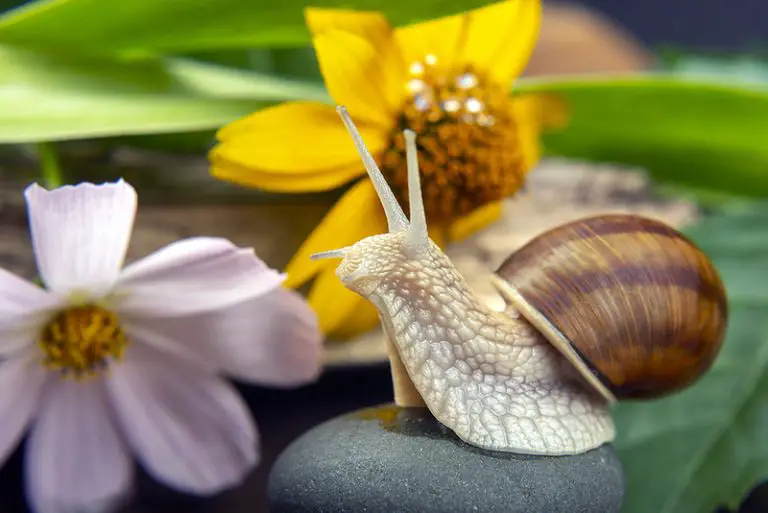
![What Do Zebra Snails Eat? [Full Guide]](https://allourcreatures.com/wp-content/uploads/2021/10/bigstock-Spotted-Nerite-Snail-neritina-402430379.jpg)



